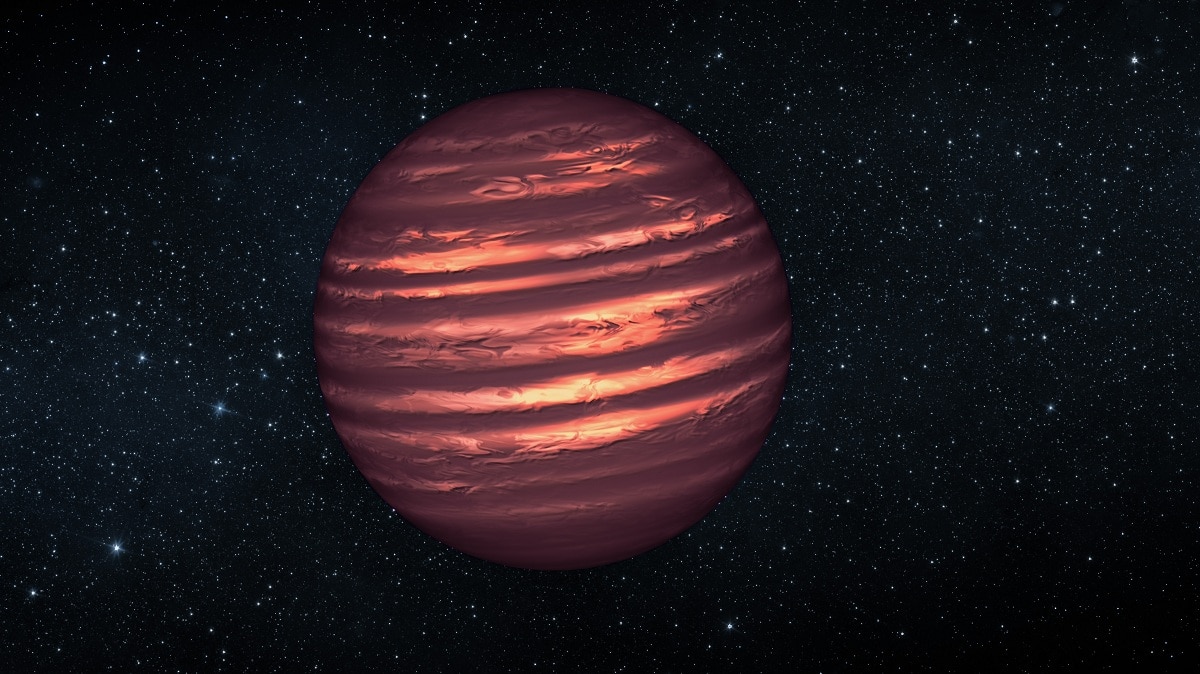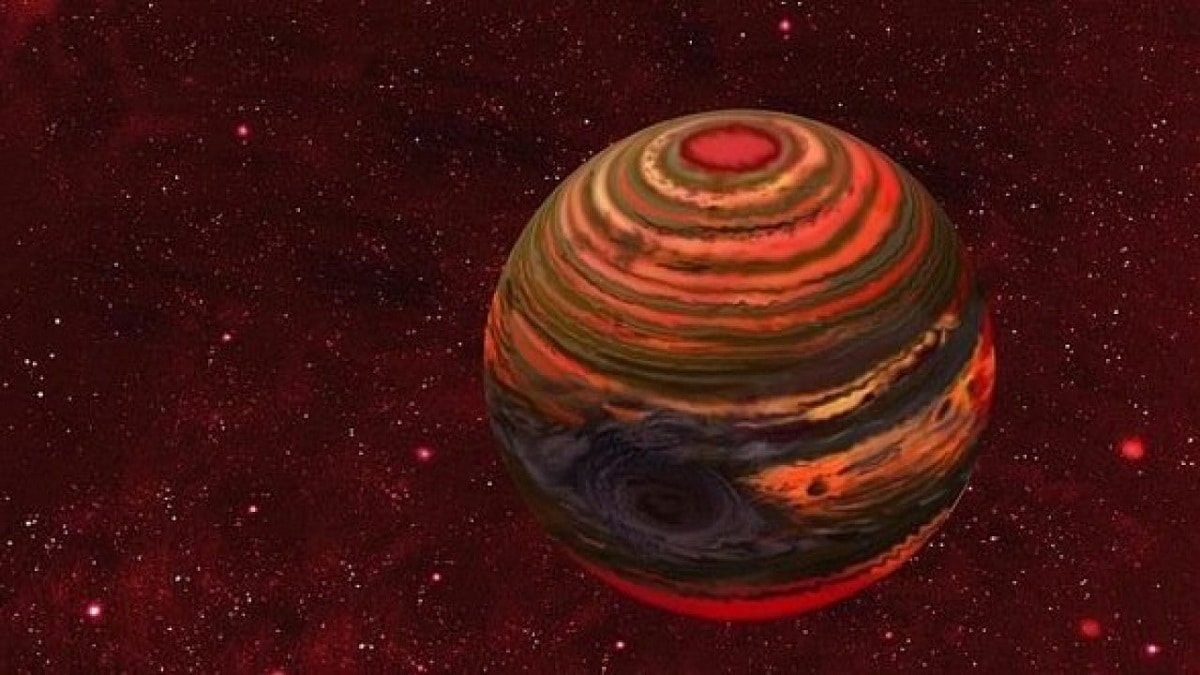
Among the stellar objects that we can find in outer space we have some that are quite mysterious and strange. It's about the brown dwarf. It is not more than a star but it is different from the rest for a simple reason: it has not managed to begin the process of nuclear fusion of its materials. Stars have a material inside them that starts the nuclear fusion reaction due to its characteristics. However, they are stars that are fairly easy to mistake for planets known as giants.
In this article we are going to tell you all the characteristics, origin and mysteries of the brown dwarf.
Key features

It is a type of stellar object with a lot of mystery around it. And it is not a star itself, so it can be confused quite easily with the so-called giant planets. So, we define a brown dwarf as a substellar object that it is not capable of producing nuclear reactions like a conventional star. It doesn't have enough mass to produce its own rogue like a star can. This is the main reason why it can easily be confused with planet.
It is an astronomical object that is located in an intermediate place between a planet and a star. It can be said that they are objects that are in outer space and that occupy this place because they do not have the amount of mass necessary to be able to shine like a conventional star does, although their size is sometimes greater than of a planet. They do not shine like a conventional star but they do shine in the infrared.
They tend to have a mass less than 0.075 that of the Sun, or about 75 times the mass of the planet Jupiter. Many astronomers draw a boundary line between brown dwarfs and planets at a size of 13 Jupiter masses. This is the mass necessary to establish nuclear fusion. And it is that it has the ability to produce energy through the fusion of deuterium, which is an isotope of hydrogen. This takes place in the first million years of age. The brown dwarf prevents further contraction of life as the nuclei are dense enough to withstand the pressure exerted by the degeneration of electrons during the nuclear fusion process.
Origin of the brown dwarf

Most of the brown dwarfs are red dwarfs that have failed to trigger nuclear fusion. It has the ability to have planets around it and can emit light although it is somewhat weaker. Another characteristic is that they are cold enough to be able to retain an atmosphere like a planet does. It is one of the reasons why it is often mistaken for large planets. The surface temperature of a larger dwarf depends on the mass of the dwarf and its age. As we have mentioned before, when the brown dwarfs are younger they have a temperature of up to 2800K, while cooling below stellar temperature around 1800K.
It is made up mainly of molecular hydrogen and is very cold since temperatures do not exceed 100 degrees Kelvin. When viewed through a telescope, a dark, opaque spot can be seen. These are clouds formed by the raw material from which the brown dwarf is made. The origin of the brown dwarf comes as a product that arises from failed stellar evolution. And it is that when a gas cloud collapses in itself, it gives rise to the formation of a protostar. You could say that a protostar is the embryo of a star. Protostars often manage to gain enough mass and a suitable temperature to trigger nuclear fusion. Nuclear fusion occurs with materials that have the brown dwarf in their nucleus. In this way, it becomes a star in the main sequence phase.
There are cases in which the brown dwarfs have become stagnant and cannot acquire enough mass to cause the hydrogen to start working with the helium. We remember that for nuclear fusion to take place, not only high temperatures are required, but also high pressure caused by a high mass. In this way, the temperature can be stabilized before it can become a star.
A brown dwarf in our solar system
Scientists have also studied the possibility of being able to inhabit planets that orbited a brown dwarf. This possibility has been studied for many years and it has been thought that the conditions for one of these stars to have a habitable planet are quite strict. The main reason is that the habitable zone so named by scientists, is quite narrow. You cannot inhabit a brown dwarf since the eccentricity of the orbit would have to be extremely low in order to prevent the creation of tidal forces. These tidal gates are responsible for producing an uncontrolled greenhouse effect that would make the environment totally uninhabitable.
A brown dwarf was discovered in our solar system at a distance of 98 light years from the sun. The discovery was made through a website that helps many people find celestial objects that are located further away from the orbit of Neptune.
Curiosities

Let's see some of the curiosities that brown dwarfs have:
- The true color of brown stars is not brown. It is a reddish orange color.
- These celestial objects have more powerful auroras than any aurora that has been detected and found in our solar system.
- There are some brown dwarfs that have extremely low temperatures. Some of them could be touched without being burned as they have temperatures below 100 degrees Celsius.
- However, they have a strong enough gravity that it is not allowed to be there. In the event that we tried to go we would be crushed instantly.
I hope that with this information you can learn more about the brown dwarf and its characteristics.
Good afternoon, I would like to know the author of this article or some information to cite this article in a written work, thank you very much for the collaboration.